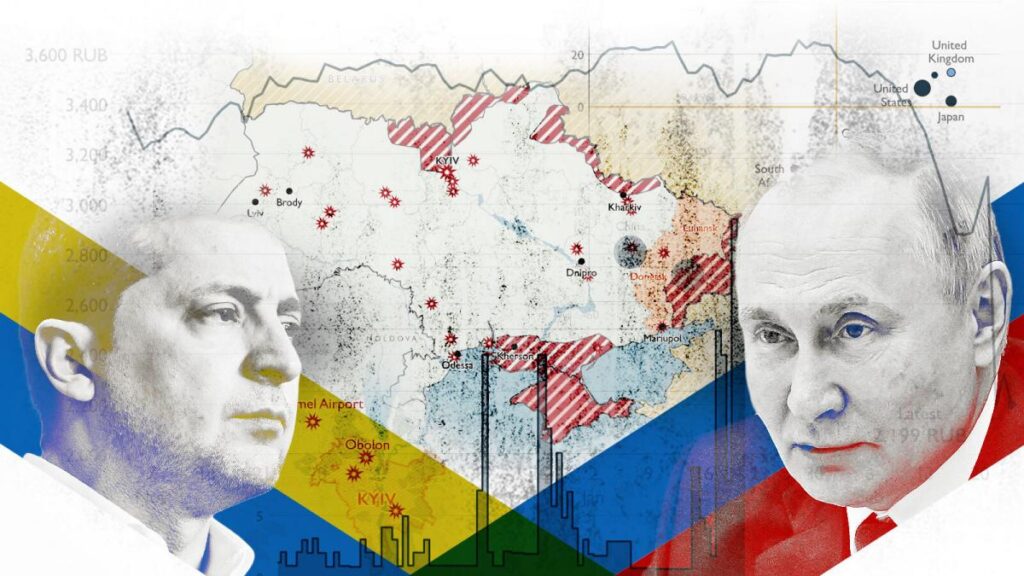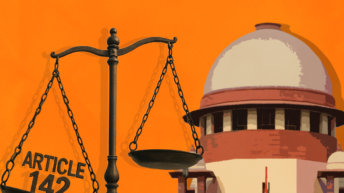
An ‘enemy at the gate’ is always alarming. In 1978, when the Afghan PM Hafizullah Amin made friendly overtures to the US, Brezhnev intervened invoking the 1978 Soviet-Afghan Treaty of Friendship. Amin was assassinated, the Soviet loyalist Babrak Kamal was installed in his stead, and a decade-long occupation of Afghanistan began. In 2008, Putin attacked Georgia to stop Tbilisi’s pro-NATO tilt. Putin has now intervened in Ukraine, after a series of events, which Moscow watched with utter dismay. Since 1991, NATO has added 14 new members, mostly from the Warsaw Treaty Organization – an erstwhile Soviet bloc. In 1990, James Baker, Secretary of State of US President George Bush (Sr) assured Gorbachev that there would be no NATO’s eastward expansion, without a treaty. Both Bush and Baker understood the costs of NATO expansion, but after the signing of the US-Russia “Founding Act” in 1997, NATO has undergone five rounds of expansion. That valuable lesson on the “costs of expansion” was soon forgotten. Putin is determined to keep NATO off Ukraine, Georgia, and Moldova.
The 1994 Budapest Memorandum and the 1997 Russia-Ukraine Treaty of Friendship heralded an era of peace and cordiality between the two nations. Moscow showed respect to Ukraine, its sovereignty, and territorial integrity but their relationship took a wrong turn when Viktor Yuschenko came to power in 2005. He attempted to steer Ukraine towards integration with Europe. He lost power due to some of his highly unpopular decisions. In 2010, Viktor Yanukovych, a politician from Donetsk was elected as the president. His pro-Moscow tilt, his refusal to sign an FTA with the EU and integrate with Europe sparked massive public outrage, and he was subsequently ousted from power with heavy western financial and political support. Moscow then intervened by annexing Crimea fearing that a pro-American regime at Kyiv would not renew the lease of the Sevastopol naval base, home to Russia’s Black Sea Fleet.
Petro Poroshenko, the fifth President of Ukraine, led his country through the first phase of the Russo-Ukrainian war, pushing insurgent forces deeper into the Donbas region. He began the process of integration with the EU, by signing the Association Agreement. However, his ‘language policy’ alienated the ethnic minorities. Rampant corruption in his administration and failure to act on his public pledge of restoring normalcy in Donbas cost him the presidency in 2019. Vladimir Zelensky then won power on the plank of fighting graft, reforming the economy, and resolving the Donbas conflict. He made a good start to bringing peace to eastern Ukraine by engaging in the Normandy dialogue. The Steinmeier formula (named after the then Foreign Minister of Germany) was proposed in 2016 to implement the political clauses of the Minsk Accord under the Normandy Format. The proposal called for holding free and fair elections in Donbas verified by the OSCE. Zelensky hoped to restore peace in eastern Ukraine through the Minsk Accord, but he was averse to holding elections in the presence of Russian troops. Putin was expecting an autonomous recognition for Donbas, which would have allowed him to influence Ukrainian policies. The Minsk Accord could not make headway in breaking the Donbas deadlock because; Moscow was not a party to Minsk II, Zelensky would not hold elections under Russian military presence, and there was a backlash from nationalist Ukrainians who sought American presence in the Normandy dialogue; they saw the “vote deal” as a precursor to “self-rule” which would eventually open up the path for Donbas’ secession.
Ideology often breeds conflict, and Putin is a highly ideological person. He has repeatedly said that Russia’s origins are rooted in Ukraine. In his view, Russians and Ukrainians are “one people – a single whole” and Russia’s origin can be traced back to a medieval federation called the “Kyvian Rus,” that included parts of modern-day Ukraine and Russia, founded by the saintly prince, Vladimir of Kyiv. In the years leading up to the Russian invasion, Putin often invoked the age-old concept of “Russkiy Mir” or the Russian world based on the idea that Russian civilization extends to all areas where ethnic Russians are in a majority, and the Russian state has a right and obligation to defend them. Ukraine’s ethnic make-up with a sizeable Russian-speaking population settled in the east reflects the country’s integration with the Soviet Union following the 1922 Union Treaty. Ethnic Ukrainians were spread across the country prior to 1932-33 when Stalin orchestrated a famine with his “collectivization policy” that killed 3-4 million Ukrainians in the eastern regions, which was about 13% of the country’s population. The “Law of Five Spikelets” forced Ukrainian peasants to hand over their harvest to Soviet authorities, resulting in the “Holodomor” famine, or “death by starvation.” Holodomor led Stalin to settle more skilled ethnic Russians in the eastern part of Ukraine and drive his industrialization campaign. The Soviet-era defense industries of Kyiv, Kharkiv, Mariupol, Zaporizhzhia, Dnipro, and Donbas are the results of their hard labor. To this day, Donbas remains the heart of Ukraine’s industrial economy. The eastern industrial belt produced 30% of Soviet defense needs, and it is this industrial corridor that Putin has long been eyeing at.
Putin had gone to war with two main objectives: “demilitarization” and “denazification” of Ukraine. The first one means dismantling the military infrastructure that the West has built in the Ukrainian territory. Soon after the invasion kicked in, Russia destroyed the US-built and operated naval base at Ochakov in the Nikolaev region of Ukraine. Russian forces then took control of Berdyansk where there is another naval base coming up with British assistance. Russian airborne troops are now aiming to cripple Ukraine’s defense apparatus, including the command-and-control centers, hooked to Western installations. As for “denazification,” the West is laying a “bear trap” for Russia with the help of neo-Nazi Azov forces, akin to the “bear trap” of Afghanistan that was laid by the US with the help of the Mujahideen four decades back. The Azov Regiment is rabidly anti-Russian and is part of the National Guard of Ukraine, based in Mariupol. Most of its members are contract combatants drawn from 22 countries. This group played a leading role in the Maidan Square “revolution” of 2014 which toppled the pro-Kremlin government of Yanukovych. Thereafter, its battalions have been engaged in fighting the pro-Russian separatists in Donbas. If the Russians get bogged down in Ukraine, then another version of the Afghan Mujahideen resistance against Soviet forces could play out, without direct Western intervention. But Moscow had burnt its fingers and learned its lessons from the Afghan debacle. Stinger missiles supplied by the US had helped the Mujahideen to wreak havoc on Soviet air power. This is why Russia is now using only a fraction of its vastly superior air power to force Kyiv to capitulate. Moscow does not want to lose its prized warplanes and highly trained air force personnel.
As of now, Russia has achieved two of its strategic goals: control over the Sea of Azov and the North Crimean Canal (NCC). Control over the western shore of the Azov Sea guarantees Russia’s connectivity with Crimea. Russian troops have also unblocked the NCC in Ukraine’s Kherson region and restored fresh water supply from the Dnieper River to the 2.4 million residents of Crimea. Kyiv had built a dam to block the canal and punish Crimea after it broke away from Ukraine, following Russia’s annexation in 2014. The 7-year long blockade had become a flashpoint in the undeclared war between the two sides. However, the legal status of Crimea will remain disputed.
Americans, on their part, were keen to goad Russia into invading Ukraine so as to bog her down in an unwinnable conflict. Recent developments in the wake of the Russian invasion have turned out to be conducive to American interests. One, Germany for now has scrapped the Nord Stream II gas pipeline days just as it was scheduled to become operational. Two, Germany has announced its remilitarization plan by hiking defense spending to over 2% of its GDP – a NATO requirement – from 1.4%. Three, former Japanese PM Shinzo Abe has urged his country to consider hosting nuclear weapons, junking its “three non-nuclear principles.” Four, non-aligned Sweden and Finland now consider seeking NATO membership. Five, as Western sanctions are beginning to bite Russia, China’s position on Ukraine got sharper. MOFA spokesperson Wang Wenbin sent a message to Russia that “no actor should recklessly harm the sovereignty and security of other countries out of seeking its own absolute security.” Then there are statements from Chinese officials indicating that China and Russia are partners, not allies. The West may have succeeded in signaling Beijing that if it dared to invade Taiwan, then China would also have to face the wrath of Western sanctions. Six, Turkey will limit access of Russian warships from the Black Sea to the Mediterranean.
Finally, there are two aspects of India-Russia relations. One, Russia offers India defence platforms, military technology and price competitiveness that others won’t. Two, Russia can hurt India’s interest vis-à-vis China. It was Stalin who prodded Mao to illegally occupy and construct a highway in Aksai Chin to access the uranium mines there. And it was Khrushchev who gave “a wink and a nod” to Mao to launch the 1962 war against India. Delhi has seen Moscow either as a supporter or a spoiler in terms of India’s interests. Delhi has tried to maximize Russian support and minimize its spoiler instincts. When the PLA is ‘at our gate,’ Delhi least expects a supply disruption of Russian weapons. Besides spares and supplies for existing military equipment, sanctions could hit the delivery of three weapons systems – S-400, AK-203, and Talwar class frigates which are in advanced stages of delivery, with payments made through European banking channels.
India also fears that vital supplies of fertilizer from Russia could be disrupted, as sanctions intensify, threatening India’s vast farm sector. Getting alternate sources of fertilizer and sunflower oil may not be easy. Exports to Russia are less than 1% of India’s total exports, but pharmaceuticals and tea could face some challenges. The plan is to get Russian banks and companies in state-run Indian banks for commercial transactions. Russia has urged India to adopt the Russian alternative to the SWIFT system – the SPFS – to settle payments. India doesn’t buy much Russian crude, but if other producers don’t compensate for the loss of Russian supplies knocked out of the global market, the oil price surge will push up inflation with adverse consequences for the Indian economy.
India abstained from voting in the UN condemning the Russian invasion, under the pretext of keeping Delhi’s options open to reach out to all sides. India now has a rare opportunity to play the role of a peacemaker between the two warring sides. China is not trusted by the West, and the West is not trusted by Russia. India, due to its good relations with all sides of the conflict, is well placed to broker a peace agreement in the troubled region.





Add comment